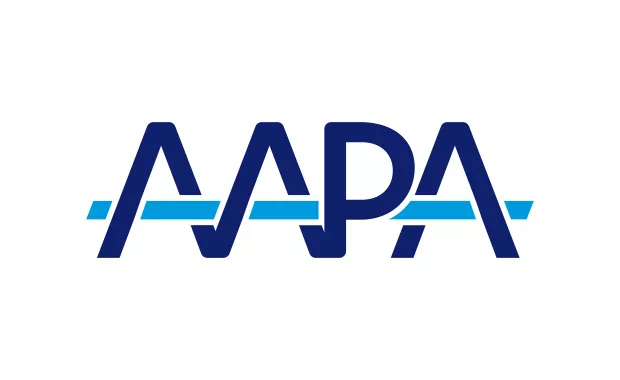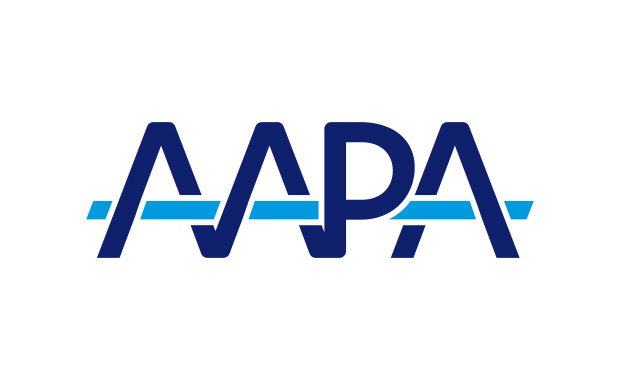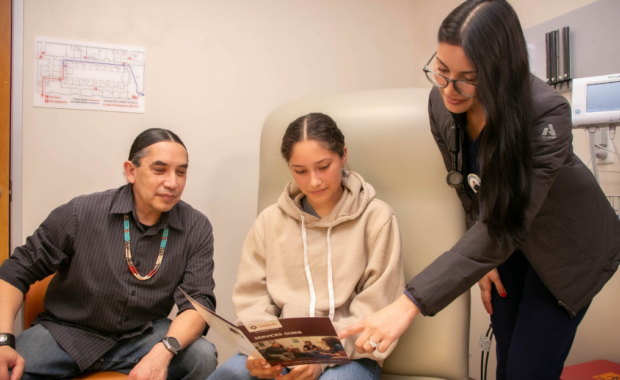A Day in the Life of a PA in Family Medicine
Consider AAPA’s We are Family (Medicine) Conference to Build Skills in the Broad Range of Areas Needed for This Specialty
December 6, 2023
By Jennifer Walker
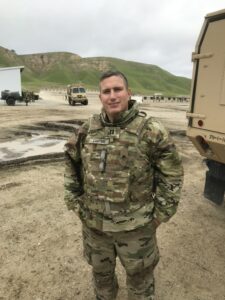
Treating ear infections. Suturing lacerations. Performing sports physicals. Managing chronic illnesses. This is all in a day’s work for family medicine PAs, who address a variety of concerns for the entire family.
“We see people with essentially every type of illness, injury, and chronic condition possible,” says PA Joseph Carter, who practices in family medicine at the Santa Ynez Tribal Health Clinic in Santa Ynez, California. “Having a background in family practice and seeing all kinds of healthcare conditions gives you that broad knowledge that really helps in any specialty you go into afterward.”
[Register today for AAPA’s We Are Family (Medicine) Conference!]
Carter became a PA after 13 years in the United States Army serving overseas in Afghanistan, and stateside in Alaska, Georgia, Kansas, and Texas. He was also a logistics officer, managing all systems that dealt with supplies for the Ohio Army National Guard. When he began to think about shifting to a career in healthcare, he was in his 30s, and married with one child—circumstances that he thought would prohibit him from making a professional change.
“I felt like healthcare was a career path that was unattainable for me,” he says. “But the Army uses PAs as primary medical providers for soldiers, and during one of my annual exams, I started talking to a PA about his job. I thought it was really interesting, and I realized that working in healthcare could be an attainable dream, even in my 30s.”
After completing PA school and practicing for a year in orthopaedics, Carter joined the Santa Ynez Tribal Health Clinic. This federally-qualified tribal health clinic is located on the reservation of the Santa Ynez Band of Chumash Indians in the Santa Ynez Valley, a primarily rural area filled with flower fields, cattle and horse ranches, vegetable and fruit farms, and vineyards. At this clinic, 20% of the patient population is Native American, while the remainder are primarily low-income and on Medicare or Medicaid.
“People who have a hard time getting in anywhere else end up coming to our clinic. It’s considered a safety net,” says Carter, who became the medical clinic administrator for the clinic in 2021. “There’s also not a lot of tribal clinics where we are, so we get a lot Native Americans who might travel an hour or two to get to us for care.”
Here’s what Carter experiences during a normal workday as a PA in family medicine.
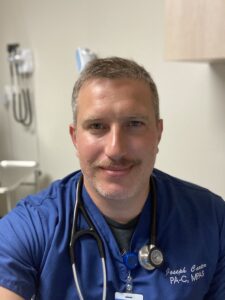
8:00 a.m.
Carter arrives at work, goes through his schedule, and reviews any lab or radiology results that have come in. He’ll contact patients with their results or will leave a note for his medical assistant to do so. He also reviews medication refill requests.
8:20 a.m. to 11:00 a.m.
Carter sees about eight patients in the morning, each for 20 minutes. His first patient has a cough, so Carter treats the viral respiratory infection. His second patient has come in for a diabetes care visit, so Carter reviews medication needs and labs, as well as required screenings and vaccinations. Then Carter sees a patient for a follow-up visit after she was discharged from the ED following a cardiac arrest; he checks in on her condition and will make referrals to specialists if needed.
His fourth patient needs a shoulder injection for chronic pain management—a treatment that Carter provides because of his background in orthopaedics. This treatment normally isn’t offered at a family practice, he says, but Carter and his colleagues draw on their backgrounds and strive to expand their knowledge so they can provide as many services as possible for their patients. “If we can learn a particular treatment and provide that care, we will,” says Carter, adding that he and his colleagues did a point-of-care ultrasound fellowship two years ago so they could start providing these services at the clinic. “We really try to do as much as we can for our patients because they might not have health insurance.”
Throughout the day, Carter might also use these appointment times to address any overdue needs in relation to patients’ chronic health conditions. For example, he may order updated diabetic labs or discuss medication for hypertension.
“This is a big part of family medicine,” Carter says. “Even though I’m seeing patients for an acute visit, a lot of the times, they haven’t been seen in a long time. People don’t like going to medical visits if they don’t need to. But if they’re acutely injured or they have an illness, that tends to be the time they go in, even reluctantly. And then you’re able to capture the rest of their health care during that visit.”
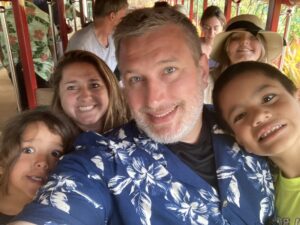
11:00 a.m. to 1:00 p.m.
Carter’s schedule allows for built-in administrative time every day. He uses the first hour to catch up on his notes from morning visits, then has lunch for the second hour.
1:00 p.m. to 4:00 p.m.
Carter sees nine patients during the afternoon. His first patient cut her finger and needs sutures. Another patient needs a wart frozen off. A third patient has a UTI that needs treatment. He performs a well child exam for one pediatric patient, and sees another who has a fever.
As one of seven providers at the clinic, Carter sees the same roster of patients every time they come in. He started this team-based healthcare model in his role as medical clinic administrator, which allows providers to get familiar with each patient’s case, including their personal preferences and goals.
“Before we implemented the teams, a patient could call in and get placed with any number of providers that work at the clinic,” he says. “It was really hard to learn what your patients needed when they’re going around from provider to provider. So, I’m passionate about continuity of care, where patients see the same provider or team of clinicians any time they come to the clinic, so they don’t have to restart every single time they go in.”
To provide this continuity, the Santa Ynez Tribal Health Clinic has two family practice teams and one pediatric team, and each team includes one physician and one PA, two medical assistants, and one referral specialist. Patients are assigned to one of the teams, and they deal with the same group of people every time they come in.
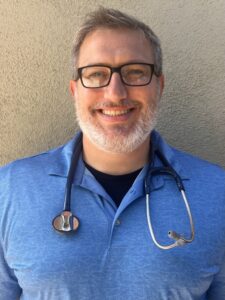
4:00 p.m. to 5:00 p.m.
Carter uses this second administrative hour to catch up on patient notes from the afternoon, call patients with lab results, and refill medication requests. He leaves around 5:00 p.m. to spend time with his wife, Cheyenne, and their three children.
For Carter, one of the biggest benefits of working in family medicine has been the opportunity to build relationships with patients. “You will see the same patients over and over again, and you get to be a part of their lives and build trust with them through many years of showing how much you care for them,” adds Carter, who will soon draw on everything he has learned in family medicine to start a new role as a PA in urgent care with Cottage Health. “You essentially become a part of patients’ families in family medicine.”
We Are Family (Medicine) Conference
PAs who are interested in family medicine can look into AAPA’s We are Family (Medicine) Conference, which will take place from January 11 -13, 2025, in Savannah, Georgia. The conference provides content in several areas, including acute and preventive topics, cardiology, dermatology, geriatrics, mental health, orthopaedics, and pediatrics. Two optional half-day courses in primary care procedures and primary care ultrasound will also be offered.
In 2022, Carter taught the ultrasound course and assisted with the primary care procedures course, which covers sutures, incision and drainage of an abscess, punch and shave biopsies, digital nerve blocks, and much more. Last year, Carter led a session on neck and back pain, covering workup, treatment, and referrals for these cases.
“You’re going to come away from the conference with clinical pearls and practice-changing knowledge that you can take back and apply right away,” Carter says. “The conference topics are as broad as family medicine. You are going to get a little bit of everything, and thats the biggest benefit.”
Jennifer Walker is a freelance writer in Baltimore, MD. Contact Jennifer at [email protected].
You Might Also Like
We are Family (Medicine) Conference Agenda
How to Overcome Struggles in Family Medicine
Insider Perspective from a PA in Family Medicine
Thank you for reading AAPA’s News Central
You have 2 articles left this month. Create a free account to read more stories, or become a member for more access to exclusive benefits! Already have an account? Log in.
